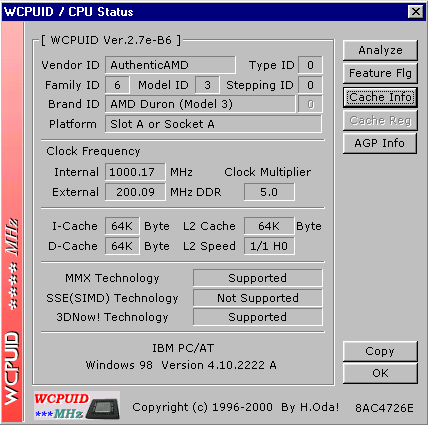Tuning Extreme: Overclocking with the Asus A7V
AMD Duron With 1000 MHz!
In our test we achieved the fastest speed with the AMD Duron 750. At a core voltage of 2.11 Volts we reached a stable clock frequency of 1000 MHz. This resembles a clock increase of 33 %. The amount of the possible core clock increase always depends on the quality of the CPU itself.
Speed record because of voltage increase: The AMD Duron 750 is stable at 1000 MHz if the core voltage is increased to 2.11 Volts. A powerful heat sink is a must, however.
Conclusion: Higher Core Voltage Helps CPUs To Reach The Limit
This relatively simple retrofit of the Asus A7V that can be done in a few minutes packs a punch: The higher core voltages of up to 2.32 Volts lets every Duron and Athlon CPU operate at the limit.
While the regular Asus A7V only offers a maximum voltage of 1.85 Volts, and most processors become unstable when overclocked, the altered board gives a very good impression. For example a Duron 750 can be overclocked 30 percent, resulting in a maximum clock frequency of 1000 MHz.
With the fast Athlon processors the possible improvements in clock frequency are rather limited, however: In our test we succeeded in running an Athlon 1000 at a maximum of 1133 MHz, always under the condition of keeping the processor safely alive and the system stable.
Nevertheless, retrofitting an Asus A7V is definitely worth it: The resistor costs less then 10 cents and the board is ready for overclocking future AMD processors past the 1000 MHz limit.
Get Tom's Hardware's best news and in-depth reviews, straight to your inbox.
Current page: AMD Duron With 1000 MHz!
Prev Page The actual core voltage can be set with the power menu in the BIOS: If the voltage is set to 1.85 Volts in the BIOS, the Asus A7V generates a maximum core voltage of 2.32 Volts after the retrofit.